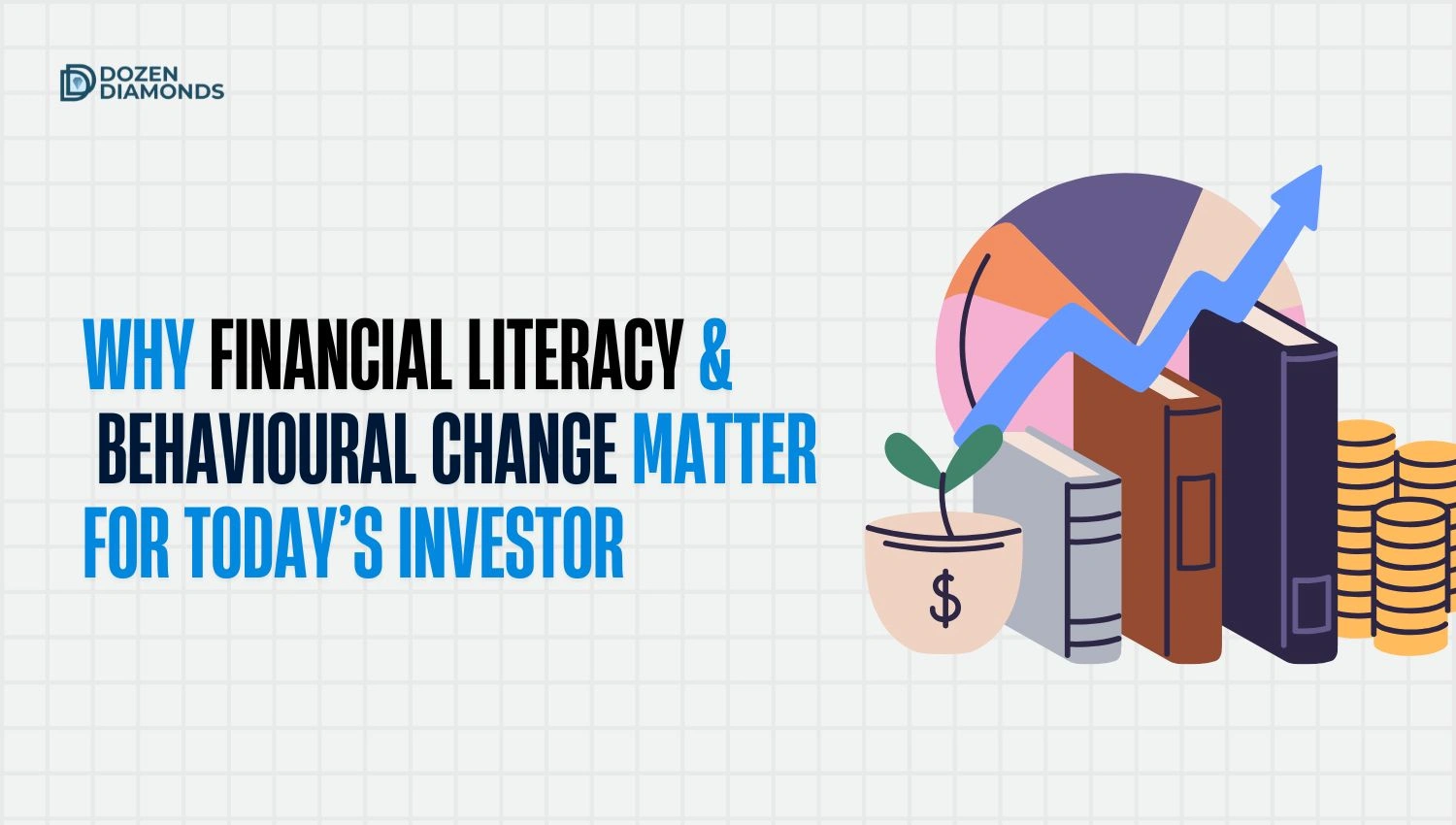Financial Literacy & Behavioural Change: A Smart Investor’s Guide

Table of Contents
Introduction – What you will achieve from this article
By reading this article you will learn exactly how improving your financial literacy & behavioural change can turn you from reactive to strategic when investing.
You will see solid research showing that higher financial literacy correlates with better investment decisions and fewer behavioural mistakes. MDPI
You will gain three specific benefits:
- A practical roadmap to build a strong portfolio foundation (structure, cost-control, risk/reward)
- Real techniques to change behaviour, avoid common biases and stay focused over time
- Insight into how this applies in the Indian investing context, with action-steps you can take right now
Why “Financial Literacy & Behavioural Change” matter for today’s investor
The average investor is becoming more sophisticated — they are showing greater interest in fundamentals, costs and long-term planning. For example, a recent report found that rising financial literacy, together with a growing middle class, is fueling retail participation in Indian markets. The Times of India
However, Knowledge alone isn’t enough — behaviour matters. Even literate investors can fall prey to biases like overconfidence or herding. MDPI
Thus, improving financial literacy and adopting behavioural change (i.e., acting differently once you know better) is key to better outcomes.
What other content misses
Many articles cover financial literacy superficially (“learn the terms”, “get educated”) but miss these points:
- Behavioural change: Knowing is good, doing is better. How do you change habits?
- Concrete cost awareness: How fees, turnover, trading behaviour eat returns — not just “be aware”.
- Risk vs reward trade-offs: Many posts talk about risk but don’t show how to evaluate reward expectations or align them with your goals.
- Indian investor realities: What the data says for India, how local behaviour and context differs from global.
In this article, you will get all of these — it fills the gap between “read the basics” and “apply smartly”.
Core components: portfolio building, cost awareness, risk vs reward
Portfolio building
A robust portfolio starts with structure: a “core” plus “satellite” approach often works well. Your core might be broad-market, low-cost funds, and your satellite could be thematic or special bets.Cost awareness
High costs kill performance more than many realise. Studies show that more financially literate investors pay attention to fees, turnover and hidden costs. MDPI+1When you know your costs, you keep more of your returns.
Risk vs reward
Understanding your time horizon, your capacity to lose, and your reward expectation is central. Financial literacy helps you ask the right questions: What return is realistic? What risk am I taking? Behavioural change means you will act based on that, not chase quick gains.Behavioural change in action: avoiding biases, staying disciplined
Even knowledgeable investors suffer from behavioural mistakes: overconfidence, herding, familiarity bias, anchoring. A recent study among Indian retail investors found that higher financial literacy reduces the impact of these biases. MDPI
How do you build behavioural change?- Set rules: e.g., “I will review my portfolio quarterly, not every day.”
- Use cost and risk thresholds: e.g., “If cost > 0.5% of assets, reconsider fund.”
- Monitor habits: avoid reacting to every headline, focus on your plan.
The Indian context: data & trends on financial literacy
In India:
- Only around 27% of Indian adults are financially literate, according to a recent survey. World Economic Forum
- A report by ASSOCHAM & ICRA noted that rising financial literacy has contributed to growth in retail investor participation, especially via mutual funds and SIPs. The Times of India
- Research shows financially literate investors in India are more likely to diversify, avoid over-trading, and make more rational investment choices. MDPI
For you, as an Indian investor, this means the environment is improving — but there is still a long way to go. If you invest the effort to improve your literacy and behaviour you gain a relative advantage.
How to integrate this with the Stressless Trading Method & the Kosh App
The Stressless Trading Method emphasises consistent, disciplined investing, minimal emotional interference, and well-structured portfolio frameworks. When you combine it with improved financial literacy & behavioural change you get a powerful synergy:
- With financial literacy, you understand the “why” behind your portfolio decisions.
- With behavioural change, you ensure you follow your rules and don’t deviate.
- With the Kosh App (or similar platform), you can operationalise this: track cost metrics, set alerts for risk thresholds, monitor your portfolio structure.
Using the Kosh App. - Review your portfolio structure on Kosh quarterly: check if your asset mix aligns with your goals and your learned cost/ri.sk thresholds.
Thus you’re not only learning but doing, in line with the Stressless Trading Method and using the Kosh App as your execution and monitoring tool.
Conclusion
In summary, financial literacy & behavioural change are two sides of the same coin — knowing what to do and doing it well. As you have seen, the “average investor” is getting more sophisticated; the difference now lies in how you use that sophistication. By focusing on portfolio building, cost awareness, and risk-reward trade-offs — and by actively working on your behaviour and habits — you set yourself up for more consistent, resilient investing. Integrating this into your method via the Stressless Trading Method and using the Kosh App to monitor and act means you move from good intentions to tangible results.
Next Step: Download the Kosh App and experience Stressless Wealth Creation.